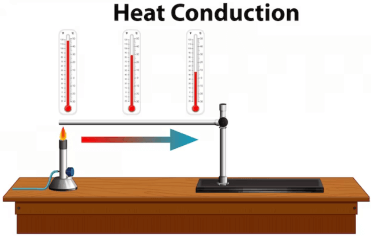Question
a.
decrease abruptly
b.
increase
c.
increase drastically
d.
be zero
Posted under Biochemical Engineering
Interact with the Community - Share Your Thoughts
Uncertain About the Answer? Seek Clarification Here.
Understand the Explanation? Include it Here.
Q. The cellular productivity in a continuous stirred tank fermenter (CSTF) increases with an increase in the dilution rate and reaches a maximum value. If the dilution rate is...
Similar Questions
Explore Relevant Multiple Choice Questions (MCQs)
Q. Fluidized bed bioreactors provide higher mass transfer rates than packed bed bioreactors because
View solution
Q. In fed-batch fermentation, mass of substrate utilized is calculated using the relationship
View solution
Q. Mixing in an anaerobic sludge blanket reactor is due to
View solution
Q. In batch culture, protogon is produced from peptone during the stationary phase with a yield of 0.4 protogon mg per g of peptone. If it is to be produced in a chemostat at a dilution rate of 0.5 h¹ from a medium containing 10 g.l¹ of peptone, then the rate of protogon synthesis would be
View solution
Q. Formation of end product by Lactococcus lactis will become non-growth associated as lactic acid accumulates because
View solution
Q. Which of the following would not be subjected to the "glucose effect"?
View solution
Q. Immobilized cell reactors for wastewater treatment have the advantage of having/being
View solution
Q. Yield coefficient represents
View solution
Q. The lowest biomass yield in a culture of Escherichia coli will be in
View solution
Q. When two populations compete for a single growth limiting substrate in a continuous fermenter, which organism would not be washed out?
View solution
Q. The continuous cultures are not widely used in industry because
View solution
Q. The lowest yield of ATP /is in
View solution
Q. A chemostat has a liquid volume of 2 litres and is being fed at a rate of 4 litres per hour. Dilution rate for this reactor will be
View solution
Q. Mixing per unit volume is observed to be poorest in
View solution
Q. The growth of an organism on glucose is described by the following Monod model parameters: μm = 0.5 h¹ and Ks =0.1 g.l¹, if the concentration of glucose in the feed is 10 g.l¹ and the dilution rate is set to 0.4 h¹, then the steady state concentration of glucose in the effluent will be
View solution
Q. A continuous reactor at steady state contains 0.04 g.l¹ of biomass and 0.02 g.l¹ of phenol. The feed contained 0.1 g.l¹ of phenol. The biomass yield would be
View solution
Q. A culture system with constant environmental conditions maintained through continual provision of nutrient and removal of wastes is called __________ culture system.
View solution
Q. Unsteady state mass balance for dynamic model of continuous stirred tank reactor (CSTR) is
View solution
Q. A fed-batch reactor initially contains 2 litre of medium. If it was fed at 1 litre per hour, then after 10 hours, the volume of the reactor will be
View solution
Q. A Bacillus sp. produces an antibiotic only during the stationary phase when grown in a batch culture. If grown in a 5 litre continuous culture, the steady state productivity of the antibiotic
View solution
Recommended Subjects
Are you eager to expand your knowledge beyond Biochemical Engineering? We've handpicked a range of related categories that you might find intriguing.
Click on the categories below to discover a wealth of MCQs and enrich your understanding of various subjects. Happy exploring!








